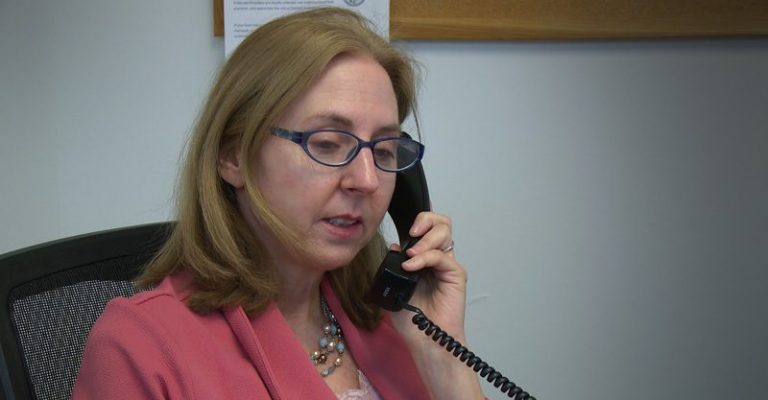Two Meanings of Talk Therapy
What is talk therapy anyway? It turns out there are two different meanings depending on who you ask.
In a general sense, talk therapy refers to psychotherapy. Psychotherapy is a broad term that includes a variety of mental health treatments provided through verbal communication—talking.
However, within the field of mental health, talk therapy can have a very different meaning. This is especially true for therapists who practice evidence-based therapies such as Cognitive Behavioral Therapy (CBT).
For these therapists, talk therapy typically refers to a more traditional approach that tends to be open-ended, less structured, and more insight-oriented. These therapies may focus on discussing and processing an emotional experience rather than actively addressing how to manage or cope with it.
Evidence-based therapies, on the other hand, are rigorously researched approaches that are shown to be effective for treating certain mental health conditions, such as anxiety and OCD (obsessive-compulsive disorder). They tend to be more structured, goal-oriented, and shorter-term than talk therapy.
Why Talk Therapy Isn’t Enough
So, why isn’t talk therapy enough for treating anxiety and OCD?
The short answer is that, in many cases, simply talking about your struggles is not enough to create meaningful change. While it is undeniably valuable to have a space where you can talk through your difficulties, conditions like anxiety and OCD need more active engagement with issues to see significant improvements.
The truth is that to manage anxiety and OCD symptoms better, you need a more structured approach to therapy that helps you learn skills and techniques backed by evidence. There are many evidence-based therapies. Some common ones are Cognitive-Behavioral Therapy (CBT), Acceptance and Commitment Therapy (ACT), or Exposure and Response Prevention (ERP).
Imagine you want to learn how to drive a car. Talking about your desire to drive or what is getting in the way of pursuing it could be a good place to start. It might even make you feel better in the moment to be heard. However, the reality is that talking about it won’t help you learn how to drive.
If you want to be able to drive, you need to learn the rules of the road and, of course, practice driving. Initially, you start with someone who knows how to drive. Then, you repeat the process and put in the hours and effort.
In the same way, effective treatment of anxiety and OCD requires an active component of not only showing up for sessions but also engaging in therapy homework between sessions and practicing skills.
The foundational components of traditional talk therapy, which focus primarily on processing emotional experiences, may be necessary, but they are often insufficient.
Potential Harm in Traditional Talk Therapy
While talk therapy can be helpful in many contexts, it’s a good idea to consider the potential downsides of using it to treat anxiety and OCD, especially if the therapist is not used to treating these conditions.
Anxiety and OCD often lead to a vicious cycle that becomes stronger depending on what you feed it. When you engage in what is called safety behavior or compulsion (specific to OCD), it feeds into the cycle. Essentially, safety behaviors and compulsions are anything individuals do mentally or physically to reduce their anxiety.
Some therapists contribute to this cycle by providing reassurance to clients. For example, clients might discuss their fears, and well-meaning therapists might unknowingly give reassurance by providing comforting words. Although this may give clients some relief in the moment, it ultimately strengthens the anxiety/OCD cycle because reassurance-seeking is a type of safety behavior/compulsion.
Similarly, some therapists may try to rationalize how their clients’ fears are unlikely to materialize. Although this could be useful in certain situations, rationalizing itself can sometimes become a safety behavior/compulsion—again, feeding into the anxiety and OCD cycle. Rationalizing may also prevent clients from developing a tolerance to uncertainty, a key component of recovery.
Lastly, without proper knowledge, therapists might mistake clients’ intrusive thoughts as a potential risk, which could lead to unnecessary action. For example, if a client has a fear of harming a loved one (a subtype of OCD called Harm OCD), a therapist with insufficient expertise might consider this a genuine risk (calling 911, reporting to CPS, or attempting to hospitalize the client). Therapists with proper knowledge and training will be able to determine whether the intrusive thoughts are a symptom of OCD or a genuine concern for risk.
Conclusion
Although traditional talk therapy can certainly provide benefits, it is usually not enough when it comes to treating anxiety and OCD. These conditions require science-backed therapies that provide structure, skills, and behavioral interventions to create lasting change.
If you’re struggling with anxiety or OCD, finding a therapist who specializes in these approaches is crucial for making significant improvements.
About the Author: Ken Cunningham is a Licensed Professional Clinical Counselor (LPCC) specializing in anxiety and OCD for adults. He is licensed in both California and Illinois. To learn more, you can visit www.aocdtherapy.com.
Photo by cottonbro studio: https://www.pexels.com/photo/person-in-black-pants-and-black-shoes-sitting-on-brown-wooden-chair-4101143/
The opinions and views expressed in any guest blog post do not necessarily reflect those of www.rtor.org or its sponsor, Laurel House, Inc. The author and www.rtor.org have no affiliations with any products or services mentioned in the article or linked to therein. Guest Authors may have affiliations to products mentioned or linked to in their author bios.
Recommended for You
- Your Heart is Listening: The Hidden Impact of Stress and Anxiety on Cardiovascular Health - October 27, 2025
- Finding Strength in Stillness: Exploring Mindfulness for Addiction Recovery - October 23, 2025
- When A Loved One Struggles with Mental Health: First Steps for Concerned Family Members - October 20, 2025







